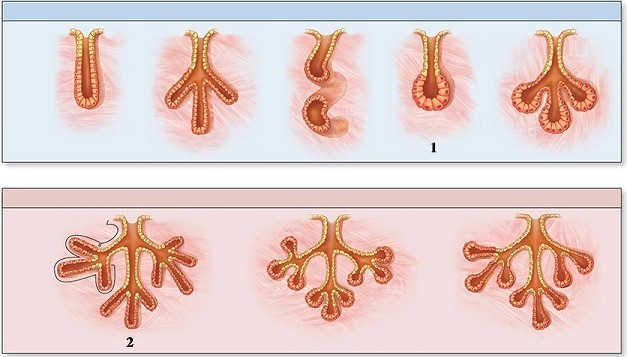a. leukemia
b. hemophilia
c. anemia
d. thalassemia
b. hemophilia
c. anemia
d. thalassemia
A. articulating surfaces.
B. passageways for nerves.
C. attachments for ligaments or tendons.
D. pits or depressions to hold cartilage.
E. passageways for blood vessels.
C
The genetically inherited clotting disorder ____ is associated with the expression of a recessive gene on the X chromosome
Sensory nerve cells, parasympathetic ganglia, and sympathetic postganglionic fibers can be found in the
A) mucosa. B) serosa. C) adventitia. D) submucosal neural plexus. E) lamina propria.
The specific shape of a protein determines its function.
Answer the following statement true (T) or false (F)
 Number 2 indicates a compound ________ gland.
Number 2 indicates a compound ________ gland.
A. tubuloacinar B. coiled acinar C. tubular D. coiled tubular E. acinar